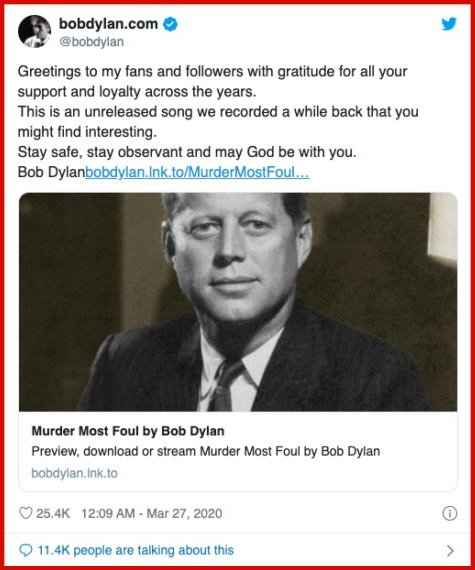
| Sean Hine last saw his girlfriend, Alicia Ross moments before Daniel Sylvester, Ross' next-door neighbour, beat her to death. The couple spent the night together drinking wine and making love at her house on the night of Aug. 17, 2005 and Sean left at midnight because he had to work early the next morning. Ross walked Hine down the driveway to his car, and they embraced. Hine said the last time he saw her was in his rearview mirror as he drove off. Moments later, neighbor, Daniel Sylvester brutally attacked Ross after the two "exchanged words" on the pathway between their houses. He dragged her body into his garage, cleaned up the blood, placed Ross into his car, took a shower and then dumped the body near Manilla, about 50 kilometres northeast of Markham. Sean Hine loved Ross, who he had begun dating about eight weeks earlier, yet when she disappeared, everybody, except for his friends and those who knew him best, insisted that he had murdered Alicia Ross -when an ignorant mob is prepared to lynch an innocent man, those who know him best are ignored. When Sean got home he called Alicia's cellphone and he got a really bad feeling when she did not respond. The police got a bad feeling too, they made him a "person of interest" which generally means a suspect. Needless to say, Ross' distraught mother, Sharon Fortis, blamed Sean Hine when her daughter disappeared. Fortis had only talked to Sylvester on four occasions during the seven years they were neighbours, and as far as she was concerned, Sean Hine was the only plausible suspect. Arthur Weinreb, Associate Editor of the Canada Free Press, wrote the following story regarding this tragic saga, on Thursday, September 29, 2005: "On August 17, 25-year-old Alicia Ross disappeared from her family home north of Toronto. Her boyfriend, Sean Hine, had been the last person to see her when he left her house that evening and he called police after he could not reach Alicia at home or at work the next morning. Ross, who had no history of taking off and who appeared happy at her job where she had just received a promotion, became big news in the Toronto and area media. From the outset, police were convinced that foul play was involved. Although the York Regional Police refused to refer to Hine as a suspect, he was constantly referred to as a person of interest immediately after the young woman went missing. It was a natural response by both the media and the public to assume that Alicia Ross was a victim of a crime and that Hine, her boyfriend of two months, was responsible. If recent high profile similar events could be used as an indication, it seemed it was only a matter of time before Sean Hine would be arrested. First there was the high profile case of Scott Peterson. Everyone watched Peterson organize searches after his pregnant wife, Laci, disappeared. Peterson was later arrested, convicted and is currently on death row in California. Last July, with Laci and Scott Peterson fresh on their minds, Canadians watched Edmonton mechanic, Michael White tearfully plead for the safe return of his wife, Liana, whose abandoned vehicle was found but who seemingly disappeared without a trace. White helped organized a search for his missing wife and was with a group of searchers when her remains were discovered. Even prior to a cause of death being determined, Michael White was arrested and charged with second degree murder and committing an indignity to a dead body. He is currently awaiting trial in Alberta. A little more than a month after Alicia Ross disappeared; when it seemed as if it was only a matter of time before Sean Hine joined Scott Peterson and Michael White in a prison cell, Daniel Sylvester, the 31-year-old next door neighbour of Ross and her family, went to a police station with his lawyer. Sylvester confessed to killing Ross and that evening police recovered the remains of the 25-year-old woman in two locations northeast of her home. The day after Sylvester’s arrest, writing in The Toronto Sun, Thane Burnett apologized to Hine for essentially ignoring those who said he couldn’t have done it and believing that he was guilty of the murder of Alicia Ross. The media, including Burnett, could not really be faulted for thinking that Hine had been guilty of killing his girlfriend. Most people didn’t need the media to help them think that the boyfriend and last person to see Ross did it. But the immediate apology for Hine for being obviously mistaken was a class act. Too often when the media does get it wrong, they simply go on as if nothing has happened. The mainstream media that salivate at the thought of catching others in mistakes rarely look at themselves when they make a mistake. Burnett’s apology was a refreshing change." Even after Sylvester confessed, Seine Heine, who had been demonized beyond repair, was persona non grata, and the Canada Free Press grappled with the peculiar situation in the following terms: "Fortis’ anger at Hine, to the point of refusing to allow him to attend her daughter’s funeral seems to be irrational. Sean Hine was not only forced to deal with the grief that resulted when his girlfriend disappeared without a trace but also had to face the reality that, whether the police used the word or not, he was the prime suspect in a criminal act. Hine told the media that he feared not just being arrested but being wrongly convicted of a crime that he did not commit, a feeling that could hardly be described as exaggerated. Who knows what would have happened had the neighbour not confessed and the police were pressured to solve Alicia’s disappearance. Hine can be excused for not acting in a way that Sharon Fortis and her family thought to be appropriate." The only difference between Sean Hine and Scott Peterson is that good fortune provided Sean Hine the opportunity to prove that the last known person to see the victim alive, was not the murderer. Scott Peterson is evidently not as fortunate. He is still in jail because the people who say he couldn't have done it are still ignored. The dirty little secret that nobody wants to talk about is that serial killers or random acts of violence baffle the authorities all the time, and sometimes, when they fail to find the real connection between the victim and the killer, they make it up. Everybody blamed the disappearance of Alicia Ross on Sean Hine and all it took was a typically baffling mystery. Contary to the zeal to make it all up, everybody who really knew Sean Hine claimed he was innocent, but when the authorities reach a conclusion, warranted or otherwise, everybody else is supposed to be wrong. Aided and abetted by the media, it was very easy to lynch Sean Hine, and it is therefore vital to heed the words of Investigative journalists like, Carsten Stroud, who said, "As investigators, we're faced with the worst kind of murder investigation-the random killing. No obvious connection between the victim and the killer. We're left with doing a massive canvass of everyone who could have had anything to do with the victims-neighbhbors, passers-by, anyone in the vicinity where the bodies were found. And at the same time, we do a complete background check on all the family members, in Homicide terms, the Nearest and Dearest, because experience has shown us that most victims have at least a marginal connection with their killers." Another interesting fact is that even in the worst serial killer investigations, the task force frequently generates the name of the killer within the first thirty days. It happened in the Bundy case: he was one of a massive list of people who were reported by citizens as owning the right kind of Volkswagon Beetle. Unfortunately, his name was buried under thousands of other possibles, and he went on to kill as many as fifty other people before he was finally caught. And what if a serial killer dies before he gets caught? Unfortunately, by definition, serial killers are "experts" at getting away with murder through tactics like dumping bodies in or near water. To quote Carsten Stroud again, "nothing destroys forensic evidence better than water. It washes away fibres, skin samples, fluids-anything from which some DNA or any locator evidence might be obtained." Serial killers know what to do to get away with murder and they are clearly not always the nearest and the dearest to the people they kill. Have the authorities listened and learned? Daniel Sylvester was not charged with second-degree murder until he turned himself in to police and voluntarily provided information which lead to the body of Alicia Ross. Mr. Sylvestor turned himself in to York Regional Police on September 20, 2005 and provided "My client voluntarily surrendered himself to police yesterday. At that time, there was no evidence whatsoever in which the police could arrest him, let alone support a conviction," said Mr. David Hobson, Sylvestor'slawyer. Having disappeared on August 17, 2005, police searches and investigations had turned up no clues, but that did not stop everybody from pointing the finger at Sean Hine. Daniel Sylvester's conscience finally got the better of him, but what if it hadn't, as it seldom does, judging from the horde of the wrongfully convicted? The police had no reason to suspect Sean, but lynch mobs characteristically assume that they alway know more than they reveal and that they are always smarter than murderers, and if that was the case, they would intervene BEFORE, they would not merely "mop up the blood" when it was already too late to put a dent in the unacceptable level of violent crime. We are not criticizing the police here, we are criticizing everybody, because in the final analysis, this responsibility to put a dent in the occurance of violent crime belongs to everybody, not to just the police. Sean Hine is a free man today because he was lucky, and that is an unacceptable standard to apply to the administration of justice. "I'm just happy I'm not wrongly convicted, the cops kept bugging me and bugging me," because Hine, 29, was the last known person to see the 25-year-old Ross before she disappeared on Aug. 17. Hine phoned 911 at 10 a.m. EDT on Wednesday morning to report Ross as missing. His father, Ken Hine said, "All that was written about him wasn't kind. I'm surprised at how one-sided the situation was." Sean Hine and Alicia Ross had only been together for a few months, but Hine said he was in love with Ross. "The last thing he said to Alicia is, "I love you," and then, he was treated as if he had murdered her. Sean's parents had never met Alicia Ross, nor had they spoken to her family, but things were getting serious and Sean was supposed to take Alicia to the family cottage the weekend after her disappearance to be introduced to his parents. Like Scott Peterson, Hine was called a "person of interest" in the murder investigation, and if Alicia's next-door neighbour Daniel Sylvester, 31, had not turned himself in, police would have eventually arrested him for the murder of Alicia Ross. And that is exactly what happened to Scott Peterson. The only substantive difference in the two cases is that the person or the people who are responsible for the disappearance and the murder of Laci Peterson did not confess. Like Scott Peterson, Sean Hine tried to cooperate with the police. He told them that he had dropped Alicia off in front of her house late at night and the next day, he saw evidence of a struggle in the backyard. The police "cleverly" dismissed what Sean Hine told them by claiming that he was not a suspect and "at the current time, the disappearance of Alicia Ross was a missing persons" case. In other words, if you read between the lines, the police were essentially saying that Sean Hine was the only suspect and that the police were too intelligent to fall for what Sean Hine was telling them. Given this culture of targeting innocent people without evidence, the tactics that were used to demonize Scott Peterson are practically identical to those that were being used against Sean Hine. If you step outside the demonization, Scott Peterson is and was a young man with great potential. "He was a tremendous kid and a tremendous golfer," recalled Dave Thoennes, who coached Peterson all four years in high school. "He was both popular and a leader." Peterson anchored teams that competed in regional and state tournaments, Thoennes said, reiterating he had nothing but good things to say about him. Peterson was consistently in the top six golfers on the team, from his sophomore year on, and was a natural athlete who reveled in the sport, Thoennes said. "He was dedicated to his game. He was dedicated to his team." Peterson was always on time to practice and never caused a problem, Thoennes said. Quite simply, the way Thoennes remembers him, Peterson was a Beaver Cleaver kind of kid. "He had a great personality. He was dependable. He was well disciplined." Thoennes recalled Peterson as being quiet, yet confident, always ready with a smile and willing to answer the call as a mentor to others on the team. His leadership blossomed his sophomore year, after playing his freshman year alongside Phil Mickelson, now one of the top players on the PGA Tour. "I feel badly for him," said Brian Argain, a friend of Scott and Laci Peterson's. "I can't even imagine being in Scott's shoes. Everybody has a theory on what happened to Laci, but nobody really knows. It's all very sad." "We're all looking for the truth," Argain said. "I'm going to support Scott no matter what the rumors are. It doesn't affect my friendship with him. Just because he may have had an affair doesn't mean he has anything to do with her disappearance." The truth is, the evidence indicates that Scott Peterson had as much to do with the disappearance of Laci as Sean Hine have to do with the disappearance of Alicia Ross. Like Sean Hine, Scott Peterson is the one who called the police, when the victim was missing, and like all the witnesses who confirmed the fact that Laci Peterson was walking her dog on December 24th, when Scott Peterson was fishing, the "culture of deception" which is responsible for making Scott Peterson a suspect is too clear and obvious for any reasonable person to accept. "When he was about 6 or 7 years old, we'd all go golfing together," his mother, Jacqueline Peterson said. "He would put his fishing pole in his bag because the course we often went to was on the San Diego River. By the second hole, he'd stop golfing and start fishing. We'd pass by him every so often, and he usually fished until we were done golfing." Scott had no living grandparents so, while he was in high school, he befriended an elderly woman who had no grandchildren and visited her on Sundays after church. Scott graduated from high school in 1990, briefly attended Arizona State University on a partial golf scholarship, but he moved back with his parents, who had bought a house in Morro Bay. He moved out about six months later, telling them that he was too old to be living at home and began working three jobs to put himself through Cuesta College and California Polytechnic State University. While he was a waiter at Pacific Cafe, Scott met Laci Rocha, an upbeat young woman with a beautiful smile. Laci's neighbor worked at the cafe, and Laci ended up there from time to time, where she engaged brief conversations with Scott as she ordered coffee. One day, Laci wrote her phone number on a piece of paper and handed it to her neighbor to give to Scott. Thinking his friend was playing a mean trick on him, Scott crumpled the paper and threw it in the garbage, and had to be convinced that it was no joke, to retrieve the number from the trash. After graduation, the Scott and Laci opened a popular eatery called The Shack, a place near the Cal Poly campus where students came for hamburgers and sandwiches. The business quickly became a success and the young couple sold it two years later after deciding to move to Modesto to start a family and be closer to Laci's parents. After years of trying, Laci became pregnant, and that's how she disappeared. She was so excited when she found out that she began calling family and friends at 7 a.m. after taking a pregnancy test. As the holiday season progressed, the Petersons held several parties at their home, and guests could not help noticing that the house no longer resembled the place that the Petersons had purchased. "Scott remodeled the entire house, doing woodwork, tile, plumbing, a little bit of everything," said Guy Miligi, a friend of the Petersons'. "I know he put a lot of hours into making that baby room just right. He was real excited about having his first child. He talked about that all the time." On Dec. 23, Laci and her mother spoke by telephone at about 8:30 p.m., Scott told police he last saw his wife the next morning as he left for a fishing trip out of the Berkeley Marina, and was unable to find her when he returned home that evening. Paranoia and extreme suspicion lead to the development of the theory that an affair with a massage therapist had turned Scott Peterson into a vicious, cold blooded murderer, but reasonable people were not overcome by the obsession to demonize Scott Peterson. It is our contention that people do not change that much over time, and if Scott Peterson was a vicious, cold blooded murderer who had something to hide, he would have murdered massage therapist, Amber Frey, in effort to cover his tracks -that's our theory. In the meantime, somebody got away with a vicious, cold blooded murder; that is disgusting and inexcusable. » 04-14-2009
Next: Democracy is undermined by the absence of justice. |








